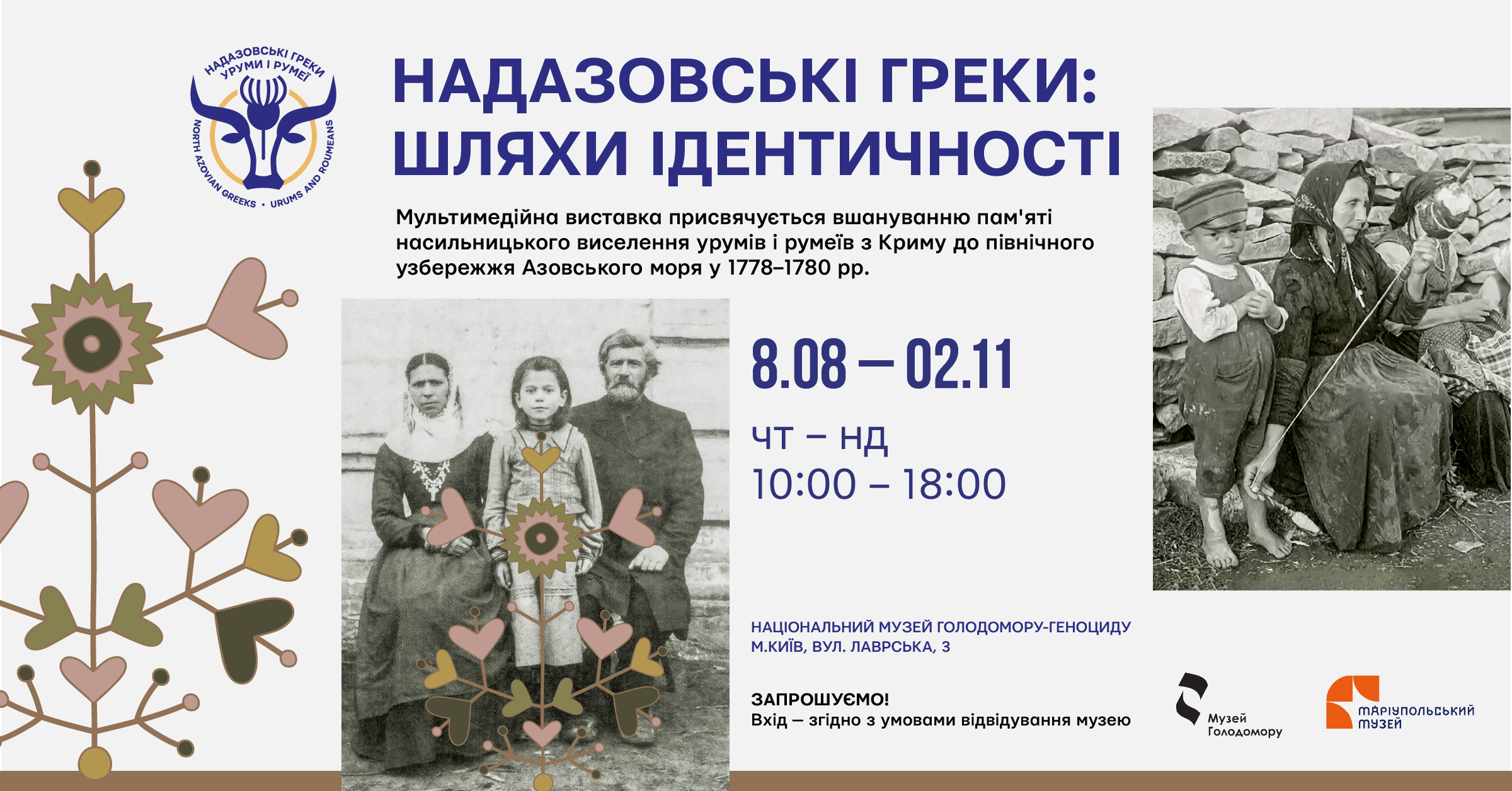The Museum is hosting an exhibition entitled ‘North Azovian Greeks: Paths of Identity.’
The exhibition ‘North Azovian Greeks: Paths of Identity’ will be on display at the museum until 2 November 2025.
What can you see at the exhibition?
Our multimedia exhibition has several components that symbolise the paths to understanding the identity of the North Azovian Greeks.
The path of identity: history
Apart from maps of settlements where the Urums and Roumeans lived in Crimea and North Azov, on a big multimedia screen, you will see a list of the first settlements founded by the Urums and Roumeans who were kicked out of Crimea, as well as the names of the Urums and Roumean families who created these settlements.
The hall also features interesting old photographs depicting the life of the North Azovian Greeks, as well as excerpts from various historical sources relating to the events of the forced deportation of Crimean Christians in 1778–1780.
The path of identity: languages
In the exhibition hall, there are three stands with headphones where you can listen to songs in two languages spoken by the North Azovian Greeks: Urums and Roumeans. QR codes on each stand allow you to view the lyrics and translations of these songs into Ukrainian. There is free Wi-Fi in the museum hall, so please connect and enjoy these unique audio recordings.
The path of identity: home
On a special map, all visitors can mark their home, the one that is always in their hearts, the one where they live now, or the one they long to return to or show their children and grandchildren someday. We, the citizens of Ukraine, have one common home. Similarly, Ukraine is the only home for the North Azovian Greeks. Leave a mark on the map with a symbolic blue or yellow flag, friends.
The museum’s permanent exhibition is also available for viewing in the hall, so thematic images dedicated to the North Azovian Greeks are displayed on a circular multimedia screen every 10 minutes.
The initiative ‘North Azovian Greeks: Paths of Identity’ is being implemented by the public organisation ‘North Azovian Greeks: Urums and Roumeans’ in partnership with the National Museum of the Holodomor Genocide and the Mariupol Local History Museum.
